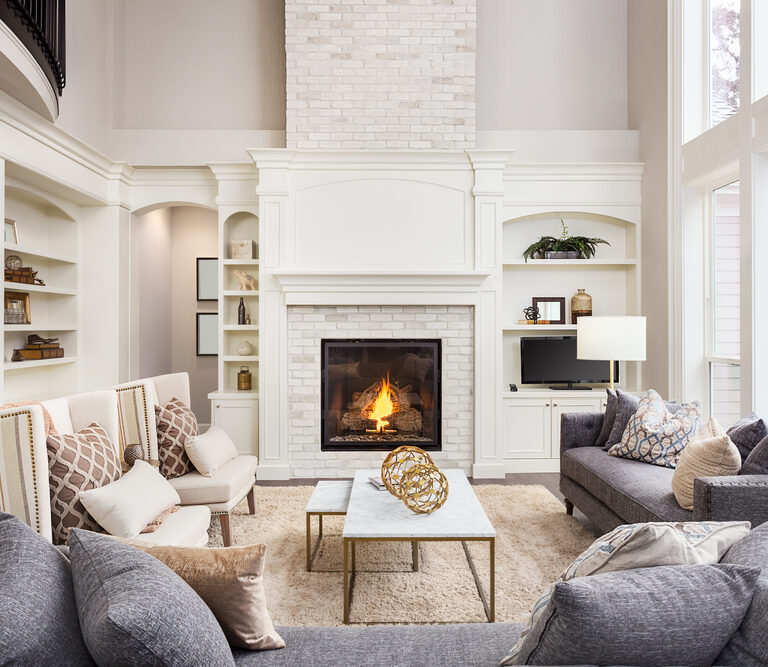Fireplaces are the type of structure that effortlessly brings charm to any room. Aside from being an aesthetically pleasing addition to a house, they offer many practical benefits.
For starters, they are a timeless and economical way to keep warm during winter. These structures reduce the energy consumption costs that come with the use of thermostats. Fireplaces are even a cost-effective way to increase the value of a property.
Building one is not your run-of-the-mill DIY project, however. Aside from a series of considerations, it requires professional help. Not everyone can build a whole chimney or install gas pipes. Nevertheless, if you want to know more about what it takes to build a fireplace, this is the guide for you.
Types of Fireplaces
Before thinking about buying a fireplace, consider the type that you would like to have. The three most popular options are masonry, electric, and gas-operated. They’re all designed to improve the look of a room, but their practical uses vary.
To choose the best option, you need to ask yourself the following questions:
Which Room Would You Like the Fireplace to Be In?
Masonry and gas-operated options usually need ventilation. For this reason, you can’t install them in every room.
Electrical ones tend to be easier to install in different places around the house.
What Size Do You Want It to Be?
If you want a traditional fireplace with a big mantel, you will need considerably more space than any other type. Gas-operated options offer more versatility, but still require appropriate ventilation, while electric models are as easy to set up as a flat-screen TV.
What Is Your Budget?
Fireplaces are by no means cheap, but the price range does fluctuate a lot. They can go from $400 to $1000. Masonry ones are the most expensive, followed by gas-operated, and then electrical. The costs tend to shoot up once you include the installation and construction of additional structures.
Do You Want It to Look Modern or Traditional?
Depending on the look you’re going for, electric or gas-operated fireplaces will typically look more modern than a masonry one.
Knowing what you want out of your fireplace will help you decide which one will suit your home the best.
How to Install a Fireplace
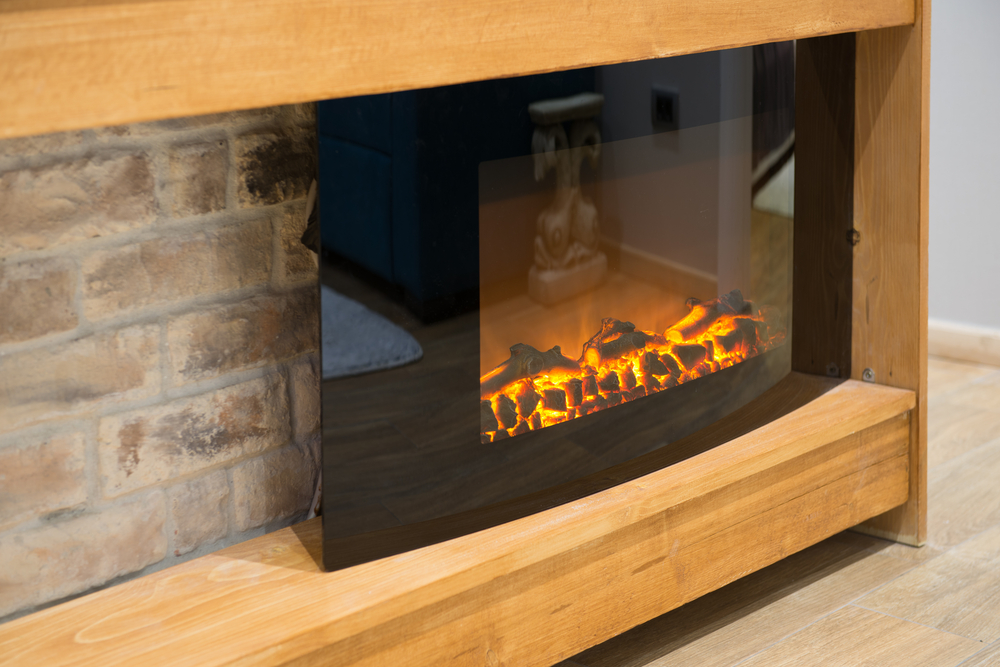
Now that we’ve covered the key considerations for choosing what type of fireplace you’d like to install, let’s move on to the practical details of how to set it up. Here’s an in-depth look at the three different types and how to build them.
Masonry Fireplace
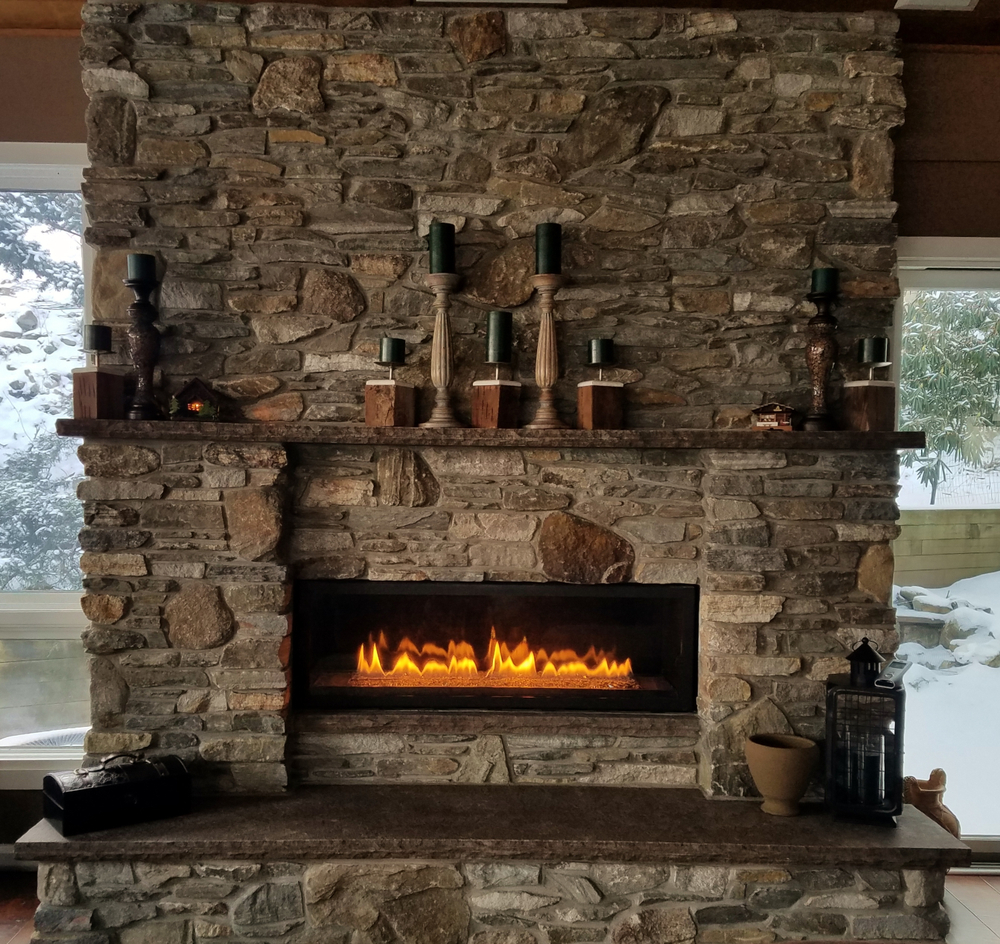
These are the most common and traditional types of fireplaces. They’re a practical solution to the cold and create a cozy and inviting atmosphere. Nowadays, because of the introduction of central heating, they have become more of a focal point of attention and a great way to bring a room together, rather than a way to keep warm.
They’re composed of two sections: the mantel and the chimney. The mantel is the structure you can see in the room where the fireplace is. The chimney is the ventilation system. It not only serves as Santa’s entrance, but also allows the smoke and CO2 to leave the room safely.
Another important reason they’re not so popular today is that they’re not good for the environment. Openly burning wood is heavily regulated by law. For the same amount of heat, a traditional fireplace releases more CO2 than gas, oil, and even coal. On top of this, the demand for wood also contributes to deforestation. Still, they’re not restricted everywhere and can be used responsibly. Always check your city codes and consult with local authorities before pulling the trigger on one.
Cost
These may be the oldest type of fireplace, but this doesn’t make them any cheaper. If you can build one, consider that the construction of a chimney will increase its price. The average cost for a masonry fireplace is between $3500 and $5600.
How to Build It:
Because of the complexity of the structure, building a complete masonry fireplace requires professional help. A building company or a contractor will instruct you on what you need to do and the materials you need to source.
Before calling anyone, take a moment to consider the spaces you have. Not only are you going to need space for the mantel and chimney in your house, but you’ll also need an area to store the wood.
Become familiar with your local fire codes. You need to know what the recommended dimensions are for your fireplace. If there are not local building codes, aim to go above the national specification to spare yourself from future headaches.
The materials will impact the price and the final look of the fireplace. Once it’s built, make sure to have the fireplace inspected and cleaned every year to avoid health hazards and accidents like chimney fires.
Gas-Operated
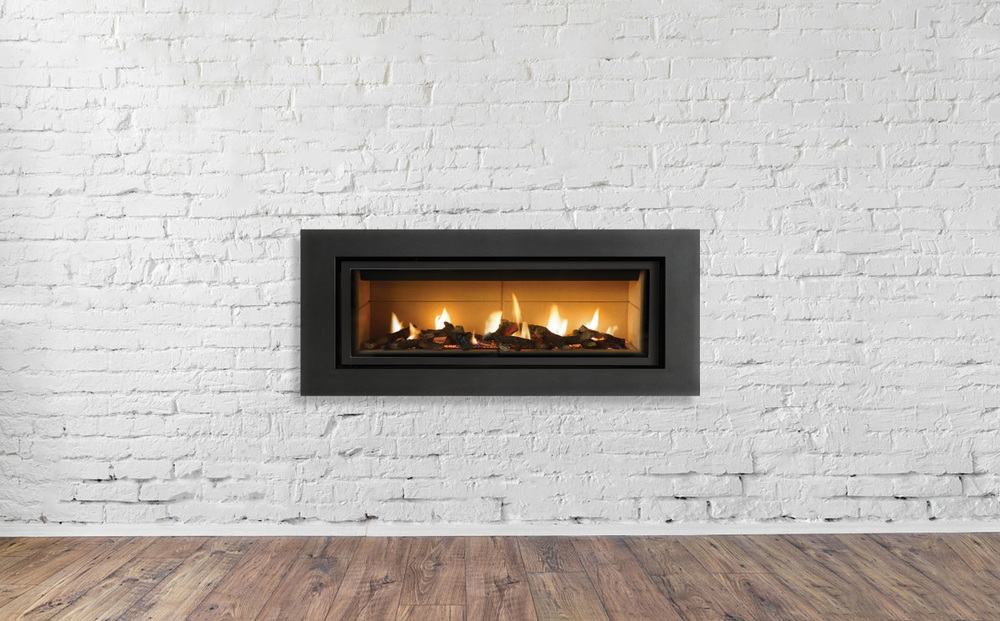
These types of fireplaces are a modern and easy-to-use alternative to masonry options. They’re also easier to install and can be turned on by just flicking a switch. Some models can even produce more heat than any other type of fireplace.
There are more ventilation options with these models. Most still need a way to release the CO2, but you don’t need a chimney. The simplicity of it also eliminates the need for constant maintenance, reducing operational costs. Some models don’t even need ventilation at all.
The main thing is that they require a gas pipeline to work. Setting a gas connection can be costly because you need a professional to do it. Do not attempt to install a gas pipeline by yourself.
Cost
Buying and installing a gas-operated fireplace averages around $4000. The price ranges depending on the model and the type of ventilation you’re going to need. If there’s no pre-existing gas line in the room, you need to factor in another $1000 just for that.
How to Build It:
Installing a gas-operated fireplace is a more straight-forward process than that of a masonry one. The three main elements to always keep in mind are ventilation, electrical wiring, and the gas line. Make sure you sort out these three things before installing the fireplace. The idea is to not have to dismantle everything if something should go wrong. Take into consideration that, while some gas-operated models require ventilation, some don’t.
Most vents run inside the walls, so you don’t have to worry about extra tubes running through your house. Depending on the model, a mantel may not be necessary. Although this is one of the most recognizable aspects of a fireplace, modern models are sometimes installed inside the wall or mounted on it.
Electric Fireplaces
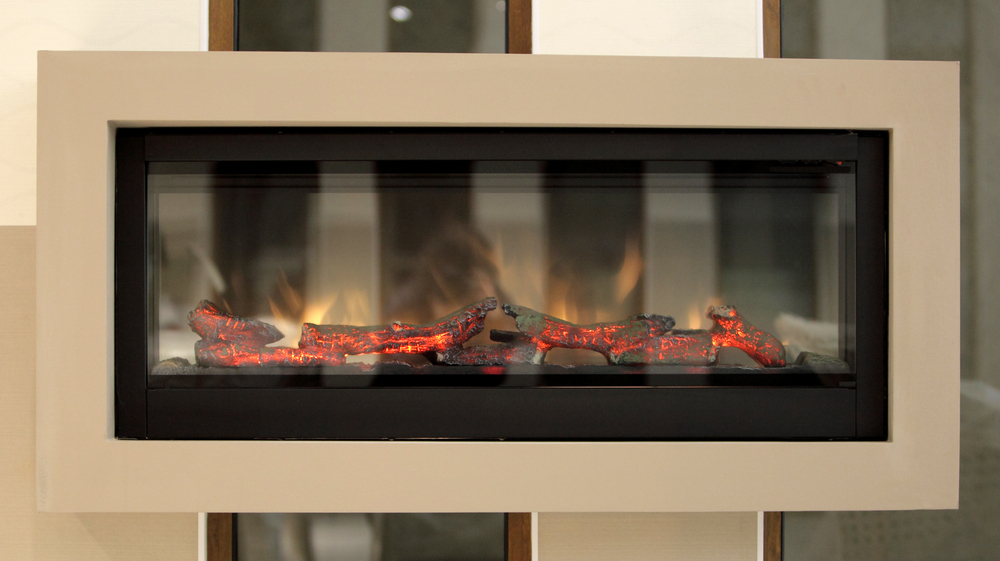
These are the most environmentally friendly option out of the three. Electric fireplaces require little to no installation, which makes them a versatile addition to any room. Interestingly enough, these fireplaces produce no fire at all. They usually have an LCD that showcases logs burning.
Meanwhile, they generate heat by absorbing air from a room and passing it through a hot coil, then releasing it. They are not as efficient as the other models when it comes to heating a room. You shouldn’t rely on this type of fireplace if what you want is to replace the thermostat.
Cost
Electric fireplaces are also the most affordable. The starting price of a basic unit goes for around $400. However, the price does go up depending on if you want a fake mantel built to simulate a real fireplace. In that case, the price can fluctuate from $800 to $1600.
How to Build It:
These are pretty much plug-and-play appliances, so there’s little to no installation. Setting up an electric fireplace resembles anchoring a flat-screen TV to a wall. They usually come with mounting brackets and a few screws. Fireplaces are heavy, so make sure your wall can support the weight of one. Concrete should be okay, but drywall may not offer the amount of support required.
If you want a more authentic look, then you could install the unit within a wall. The good news is that if you’re a DIY type of person, this project is within reach, without the need to hire professional help. You need to be knowledgeable about cutting, patching, and finishing a wall. Dust off the house blueprints so you don’t cut into the wiring or a pipe while making the frame.
To build a proper support, measure the fireplace and build a wood frame with those proportions in mind. The frame should fit tightly in the wall opening you’re about to make. If you believe there’s not much structural support for the fireplace, you can use some screws to anchor the frame to the wall. Once you set up the fireplace inside the frame, use some wooden shims to make sure it’s leveled correctly.
Most electric fireplaces connect directly to an outlet, but it tends to look nicer when all the cables run behind the wall. Several options require a direct connection to the house power supply, in which case you should hire an electrician. Avoid using extension cords, because they’re prone to overheating with this kind of appliance, which could cause fires.
Fireplace Considerations
To get the most out of your fireplace in a safe way, always remember these considerations:
- Always have a fire extinguisher on your property.
- Don’t place flammable objects or furniture close to your fireplace.
- If you’re using a gas-operated fireplace, set up a CO2 monitor in the same room.
- Set up smoke detectors.
- Perform yearly maintenance on the fireplace and the chimney.
- If you have children in the house, consider buying some safety screens for the mantel.
- Check every now and then for animals’ nests and other blockages.
- Never leave a fire unattended, and always make sure it’s out when you leave the house or go to sleep.
- Always keep the mantel clean from ash, as it can generate more smoke.
Final Thoughts
Fireplaces are a good investment, not only for their practical use but for the unique atmosphere they create around them. It can be an extensive project – and typically not one you should attempt to DIY in full – but it’s a worthwhile way to bring some extra heat and coziness to your home. Depending on your taste, you can choose either a classic or a modern aesthetic for your fireplace.
